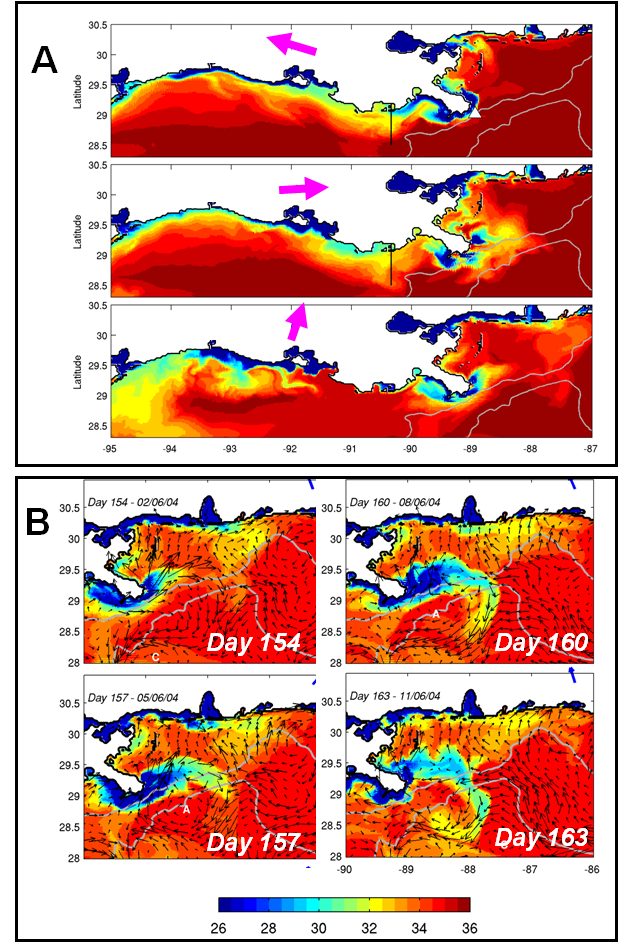DESCRIPTION:
A):Snapshots of model surface salinity from selected days depicting different states of the Mississippi River plume under varied (6-hourly) wind forcing: during a period of easterly, downwelling-favorable winds (upper), after a period of westerly, upwelling favorable winds (middle) and during a period of southerly winds. The magenta vectors show the average wind direction during each wind event. (B)Snapshots of sea surface salinity and surface velocity vectors at selected days after the period of southerly winds. A and C show the location of anticyclonicand cyclonic eddies, respectively. For each day, the average wind vector is presented on the upper-right corner of the plot.
Easterly, downwelling-favorable winds transport low-salinity waters towards the broader Louisiana-Texas shelf effectively insulates the coastal plume from the offshore circulation. Offshore removal of the plume is induced by events of westerly and southerly winds, when riverinewaters near the delta are transported towards and beyond the shelfbreakto the east of the delta. Once the plume is removed to the shelfbreakregion by the favorable wind conditions (B) , the plume can be effectively entrained by the offshore eddy circulation (cyclones and anticyclones)
CONTACT:
Villy Kourafalou — vkourafalou@rsmas.miami.edu
Rafael Schiller — rschiller@rsmas.miami.edu




